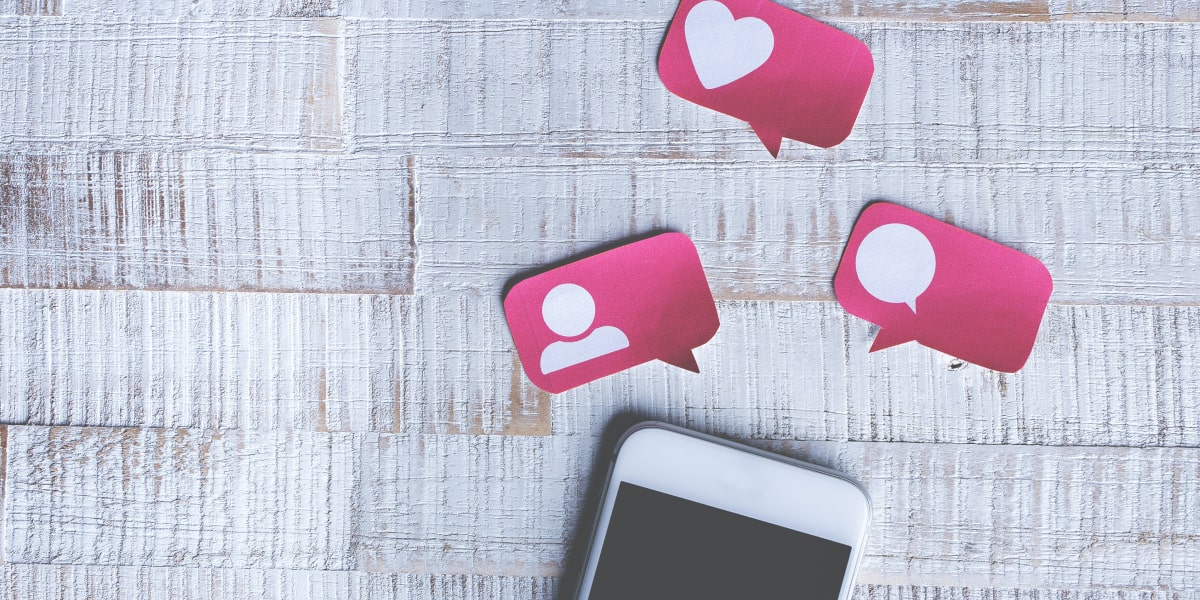Whether you’re working to become a remote UX designer, or you’re realized that you might have to work remotely given the rise in remote work across fields since the Covid-19 pandemic—working as a remote UX designer has its perks and its challenges.
On the plus side of things, remote UX designers generally have a flexible work schedule, minimum direct supervision, uninterrupted focus time, and my personal favourite—no time wasted on the morning commute.
But there is another side to the coin.
Here, I’ll share some of my personal insights on the challenges that are unique to remote UX designers, as well as how to face those challenges.
And yes, all of these problems do have solutions! So don’t feel discouraged about pursuing this path just because it’s new and different.
Here are five common challenges that remote designers face:
- Remote user research
- Presenting design solutions
- Design handoff to developers
- Notification overwhelm
- Getting to know your coworkers
Let’s have a closer look at each of these challenges, and how to address them.

Challenge #1: Remote user research
The challenge
Without user research, UX designers will fail to fulfill their mission to deliver useful and usable products.
There are two types of research: primary research, where direct interaction with target users is required—such as user interviews and usability testing—and secondary research, where information can be gathered without the target user’s presence, such as competitive analysis and heuristic walkthrough.
While both primary and secondary research are important, primary research has more weight in informing design decisions — especially for iteration. For a remote UX designer, they might not be living in the same geographic area as their product’s target user.
In my case, I’m currently designing a real estate shares trading platform for New York-based investors while traveling/living on the other side of the Atlantic Ocean. Since direct access to target users is not a given, I have to find workarounds to conduct and document my research.
The solution
Don’t shy away from remote primary research just because it’s difficult. Instead, seek out your team’s help and existing tools to help solve the problem. After I articulated the need for research and outlined the plan of action with my team, they were more than happy to schedule test users on the ground.
Next, we leverage remote user testing tools such as Calendly to schedule tests, and Lookback to conduct and record test sessions. As an added benefit, all of our research tests are now recorded and shared with the entire product team so that everyone is aligned.
And of course, remember that there are loads of other remote UX research tools out there that you can work with.
Challenge #2: Presenting design solutions
The challenge
You know the drill: You’re in a product team meeting, you’re the only UX designer on the team and you present your design solution, but the team is not convinced. Your mind is a library of solutions, and you immediately see the alternative solutions in your head.
The problem is that these visual references sit in your head and not your project manager’s or developer’s. You try to describe what you mean, but the words just don’t quite convey the idea. If you’re a remote UX designer, you feel the impulse to grab a notepad and draw your solution, only to realize no one is around you to see it.
The benefit of working on-site is that you can quickly bounce ideas off of stakeholders with quick sketches: on whiteboards, tablets, or a large sheet of paper. With remote work setup, the options are limited. Asking your team to hold their breath over a con-call while you draw is awkward.
More awkward still: holding up your notepad in front of the webcam as your team struggle to make out what it is you’ve drawn…
The solution
Try to set up a digital drawing pad such as Wacom if you can. It helps to increase the visual definition of what you are trying to sketch, and eliminates the awkwardness at times of low-quality video calls. You can never know if your coworkers are connected to fast wifi.
There are other quick sketching tools such as InVision Freehand, which allows the team to draw solutions and annotate together in realtime.
If you prefer whiteboarding solutions, I found a handy digital whiteboard that lets your team see you draw in realtime, and they can add to it too.
Remember that it can be easier to get buy-in from stakeholders if they’ve had a role in the ideation process. Consider involving them in your next design thinking workshop! And if you’d like to learn how to run one of these, check out our guide to remote design thinking workshops.
Challenge #3: Design handoff to developers
The challenge
Design is far from being done the moment your stakeholders sign off on your designs. It only marks the beginning of the execution cycle. Once you know what the design solution looks like, the next big hurdle a remote UX designer has to jump is how to get it made exactly as it was designed.
I can sit in my home office and imagine how my life would be easier if only I could just sit next to the developers, and tell them why there should be more white space between two cards, or the header and sub-header texts are of different shades of blue.
It’s not uncommon for me to spend more time getting the design executed right by going back and forth between prototypes and coded designs, using Inspect tool in Chrome to pick out every single detail that’s slightly off.
Design handoff is never a quick and easy process, but thats even more true for remote UX designers. Over time, though, I’ve adopted some processes and tools to make it less painful.
The solution
It’s not enough to just upload your Sketch file to Zeplin and call it a day.
If you aren’t sitting next to the developer to oversee the execution of every detail, you need to go the extra mile to clearly explain UI interactions, responsive layout and different states for edge cases. How are components grouped into grids? How does the screen behave when the user resizes the browser? What happens when user input is incorrect?
Personally, I use Sketch Measure to redline my specs that are critical to adhere to, InVision Inspect to handoff the Sketch file in pixel perfection, and a separate file for different form and button states. I also create interactive prototypes and export animated interactions to explain how it works.
Over time, the designers should work with developers to build a component library so that the same specs can be re-used for different contexts without fail.
Challenge #4: Notification overwhelm
The challenge
If you think remote work is an end-all solution to constant interruptions, think again. As a team player, you can’t simply put on your headphones and lose yourself in pixel pushing for hours on end without checking in with your team.
Requests stream in all day long without warning: biz dev people will be asking for brand assets, illustrators will be sending over artwork for your feedback, your project manager will be requesting changes to the design, and dev will constantly be chasing you for design QA (quality assurance) so that they can close out tickets.
If you aren’t careful, you can easily end up wasting the whole day on Slack messages, email replies, Jira comments, and Github pull requests. Handle the constant stream of unread emails and unattended messages with extreme care, or your focused design time can become secondary and the quality of work will suffer as a result of your frazzled attention span!
The solution
After seeing my design work suffer from nonstop Slack messages, I had to establish some boundaries with my team members: keep all project-related conversations on PM tools, and all other related conversations to email.
The need to attend to instant messages diverts our attention away from quality work. And I do the same for my team: if something is not urgent or high priority, I save the message for later—or never.
Jason Fried hits the nail on the head in his book Rework: “A successful alone-time period means letting go of communication addiction.”
Most of the time, instant messaging tools are just a place for noisy chatter. If you want to get work done as a remote UX designer, you’ll need to make those tools second priority—attend to them after your top-priority work is done.

(Photo by Cristian Dina from Pexels)
No.5 — Getting to know your coworkers
The challenge
Getting to know your fellow team members is never easy and, as with all the challenges we’ve discusses so far, this is even more the case for remote UX designers (or remote workers in general!). It takes effort in the traditional work space, and even more so when working remotely.
Places like the water cooler and office kitchen, where coworkers let their guard down for casual interactions ,simply do not exist for remote teams. Loneliness and isolation are a serious threat to the longevity of remote teams. Sometimes, we just need to feel the rapport with fellow humans to stay motivated.
I’m not advocating idle chitchat as a way to get to know your coworkers either. It’s not uncommon in traditional workspaces for people to have sat next to each other for years and still barely know each other.
In a way, the lack of physical space increases personal barriers. There is more at stake when it comes to letting your guard down in a professional setting.
I believe remote work can present a solution to this “professional masking” thing if we put in the work to have real conversations. And by conversations, I mean real talk about our values and attitudes rather than small talk.
The solution
Even when working remotely, it’s important to consider team morale and to establish a good rapport with your colleagues. Transparency is key, so try to communicate openly and keep conversations to public channels as much as possible.
Despite not physically being there with your team, make an effort to get to know them: find out what motivates them, and what kinds of lives they live outside of work. I’ve found Donut, a Slackbot which sets you up with random “coffee chats” with people on your team, to be really useful for this!
A final word
So there you have it: working as a remote UX designer does come with its challenges, but there are plenty of workarounds. As long as you are aware of these obstacles and make a conscious effort to overcome them, you can enjoy a productive and effective work life while you enjoy all the perks that remote work has to offer.
If you’d like to learn more about working as a remote UX designer, check out these articles:
